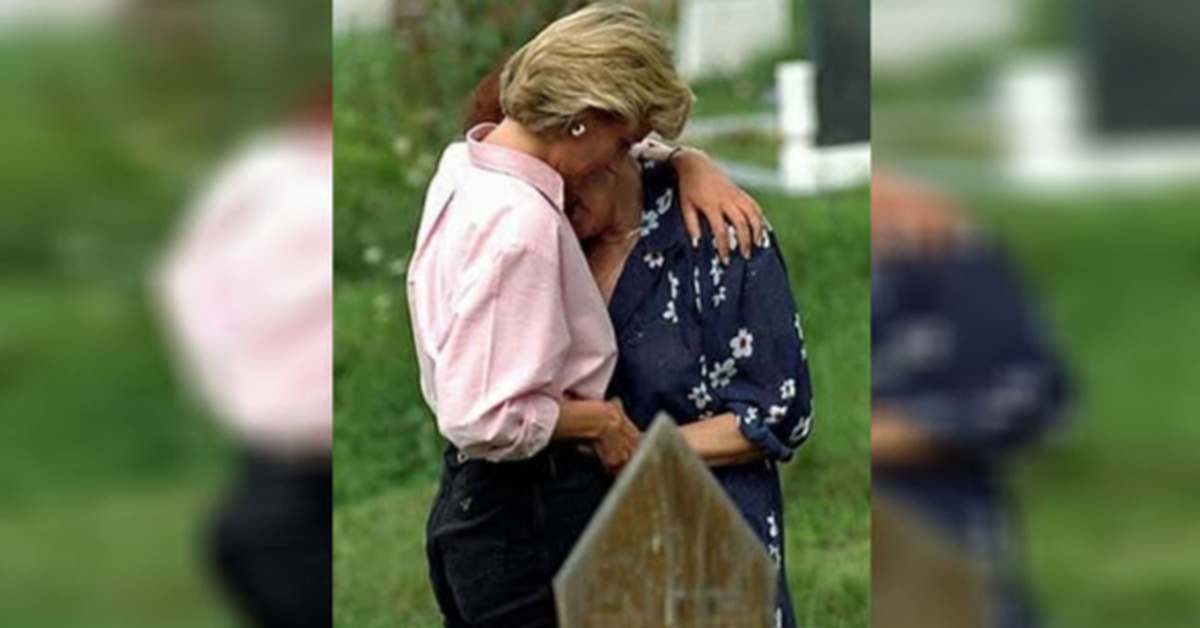It’s hard to believe that 22 years have passed since we lost Princess Diana. Although she was taken from us far too early, we are still inspired by the things that she said and did while she was alive. The beauty and elegance that she brought into our lives captivated the world but there was something else that really captured our attention, her compassion.
It doesn’t matter who we are, we all have some empathy and compassion built into us naturally. Some people describe empathy as feeling someone else’s pain in our heart and I think we could all agree that Princess Diana had that type of fellow feeling in great measure. It’s little wonder that she was known as the ‘People’s Princess’. In her life, she traveled to many areas and shared her compassion with many people. There was one moment, however, that was touching beyond words.
https://www.instagram.com/p/B0-CcbUHTVJ/?utm_source=ig_embed
On August 31, 1997, just a few weeks before she died, Diana was in Bosnia on a humanitarian visit. She traveled to bring out the issues involved with land mines. Ken Rutherford and Jerry White were with her on the trip and they reflected on what they experienced on the 2017 HBO documentary, Diana, Our Mother: Her Life and Legacy. There were many stories shared but for White, it was an unplanned detour to the Sarajevo War Cemetery on August 10, 1997.
https://www.instagram.com/p/B0_NTu8Hwmi/?utm_source=ig_web_copy_link
“The image of her in a cemetery in Sarajevo, on the last day of our three-day trip [still haunts me]. It wasn’t planned. It was never on the itinerary. But Diana told me three times, ‘I can’t get this picture of me in a cemetery out of my mind.’ She asked me if there was a cemetery nearby, as it was something we should visit. ‘Jerry, I have this feeling, this image of me in a cemetery, it’s strange.’ We were running late for a final reception, and there was no room for this detour, but Princess Diana seemed adamant, mysteriously,” he recounted.

White continued, “So, we drove out of the way to the former Olympic stadium that had become a massive graveyard for those killed during the war. I watched as Diana took her place among hundreds of tombstones. It was eerie, now that I reflect on it. She walked slowly, among tombstones and even yellow rose bushes. She met a Bosnian mother tending to the grave of her son, grieving visibly. Diana didn’t speak Bosnian, and this mother didn’t know English. So, they just embraced. So intimately, so physical, so emotional, mother-to-mother.”

“It was vintage Diana, reaching out, wiping the mother’s tears and cheeks. It’s the only framed photograph of Diana I still have in my home,” he continued. Reflecting on that particular moment, White revealed that he found himself wondering about Diana’s strange intuition in the aftermath of her tragic accident just a few weeks later. “After her death in Paris only weeks later, I came to wonder whether the Princess instituted her own death, her burial. I don’t know, but maybe, psychically, intuitively, Diana sensed she was going to die. It still gives me chills when I recall this powerful, unscripted, unplanned moment, somehow prescient,” he said.

White continued to praise the compassion of the princess, saying: “Diana listened more than she spoke. It was intense to watch her absorb human pain. She was hyper-intuitive and fully appropriate in the face of people’s suffering. She asked questions and gave her full attention, focusing her big eyes like a laser on the tragic story in front of her. Whenever I asked her how she might want to handle a particular visit, she’d say, ‘We’ll make it work. It’s all about the people.’ Diana repeated how it was simply important ‘to care enough to show up’ and be present.”
https://www.instagram.com/p/B08mzTsn-yE/?utm_source=ig_web_copy_link
He added, “She’d ask questions like, ‘Please tell me your story. What happened to you? How did you lose your leg? Where did you find your courage and strength to survive?’ Diana would invariably reach out and touch each survivor at some point in the conversation, never cringing in the face of scars and stumps and open sores. She’d also bring in the family members, asking mothers and siblings what they had experienced, understanding a parent’s pain watching their kids suffer. She invited hope by inquiring about each survivor’s dream for the future. And she always made some side jokes to poke the tense air out of the bubble of tragedy. Humor is one of the top hallmarks of resilience, and Princess Diana always brought laughter and unexpected irreverence into the room.”
Source: Shared

